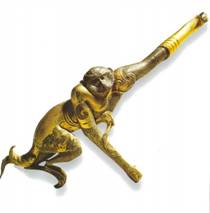
It is believed to be a buckle for ancient Chinese people. Made from silver, the buckle features the image of a moving monkey. It was made in China’s Warring States Period (475-221 BC) and was discovered in China’s Shandong province in 1977.
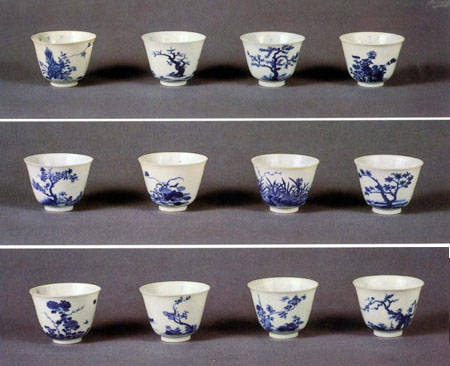
This is one set of ceramic cups made in China’s emperor Kangxi period in the Qing Dynasty (1644-1911); there are 12 in total. Each one features the scene of one flower of the year on the one side and a poem on the opposite side. They are five centimeters in height, 6.7 centimeters in diameter on its upside, and 2.7 centimeters in diameter on its underside.
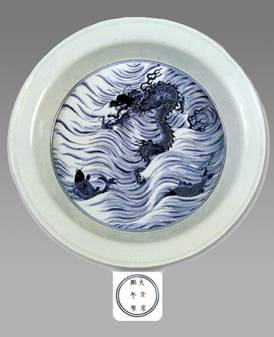
The ceramic plate made in China’s emperor Kangxi period of the Qing Dynasty (1644-1911) features the scene of two carp chasing with each other and a rampant Jiaolong, dragon-like animal rising out of water —— a typical auspicious design in Chinese culture.
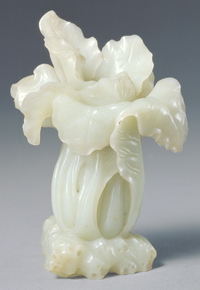
This is a jade-carved cabbage made in China’s Qing Dynasty (1644-1911).
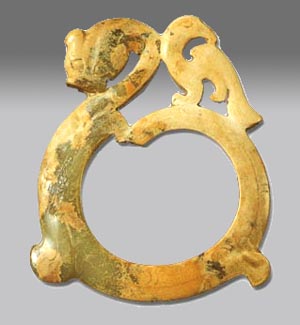
This is a jade decoration, featuring a dragon and a phoenix.
Editor: Dong Lin
